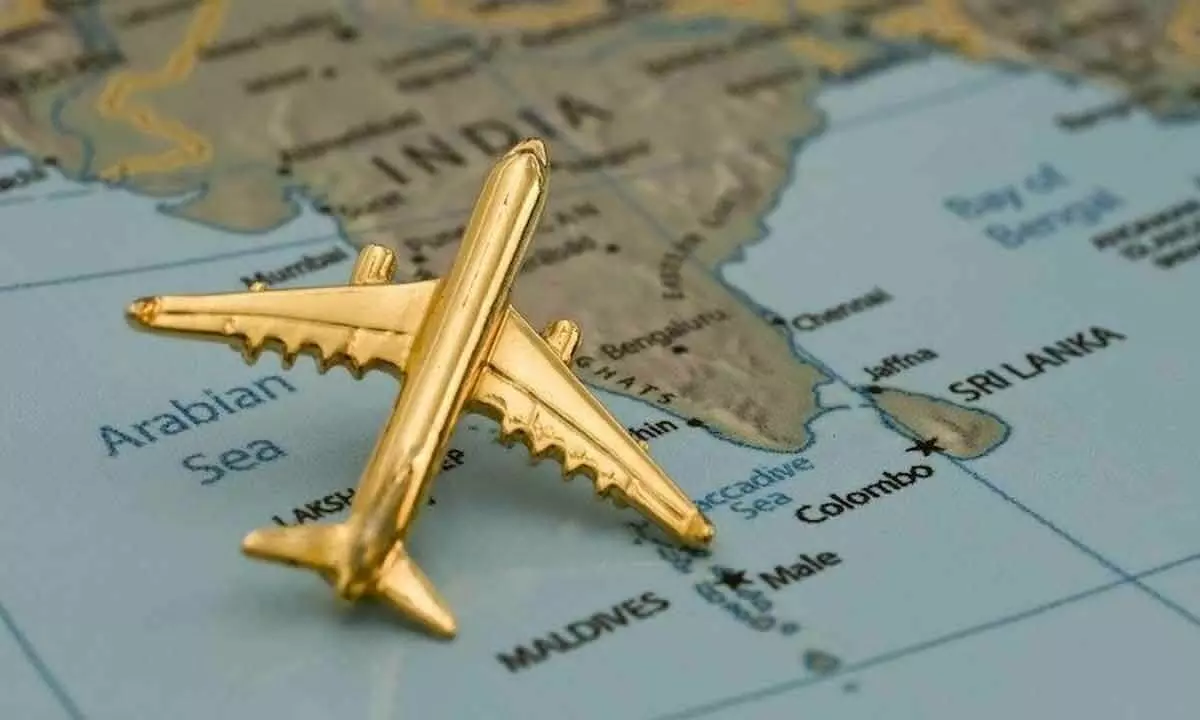Aviation experts ponder over relevance of hub airport for India
‘Hub’ and ‘spoke’ flight network patterns gather momentum
image for illustrative purpose

The selection of hub airports is based on strategic geographic factors and demand. It is to cater to this precise need that a specific planning method and route optimisation are used. An international hub had become imperative with Air India ordering 470 narrow and widebody aircraft from global original equipment makers (OEMs) Airbus and Boeing and IndiGo expanding by adding more international destinations to its route network
Countries looking to develop their economies and create employment for the people often see tourism as a key revenue source from foreign investment. Not only does travel and tourism, directly and through its supply chains, support 10.4% of global GDP and one in every ten jobs across the world, its growth has remained sustained at a level above that of the global economy in each of the last seven years.
Aviation route development is a key factor in the success of travel and tourism. Over a period of time and through a strategic approach, some aviation hub cities have been able to extend stays of transit visitors into multi-day stopovers and to encourage visits to the city as a final destination in its own right.
Developing this move from transit hub to destination relies on a number of factors. Those that have had great successes in making this transition have benefitted from a combination of factors, a strong national airline that is sound both financially and reputation-wise; solid appeal with a robust inbound tourism; excellent airline connectivity, sufficient infrastructure and favourable regulatory frameworks developed through prominent stakeholder partnerships,
Commercial aviation is dominated by a series of hub airports where passengers connect seamlessly between airlines, frequently in the shortest possible times with their luggage perhaps following a few days later.
Reducing the costs of travel and increasing their connectivity are major advantages of the hub and spoke network system. Connectivity is increased within the hub by concentrating landings and takeoffs at the hub (hub waves). Furthermore, in relation to the network pattern in flight, there are “hub” and “spoke” flight network patterns where all flights head to one large central location and passengers can transfer to other flights to reach their final destination. This pattern has been able to expand and organise the route network and prioritise the interest of consumers or air passengers.
The arrival of airplanes in the “hub” and “spoke” flight network pattern is well coordinated, and to make it easier for passengers or goods that are to be transferred to another flight, this pattern is repeated several times in a day. The hub airports serve as a consolidation of passengers and cargoes, which can be moved to other airports, categorised as spoke airports and provide a connecting flight to various subsequent destinations. The selection of hub airports is based on strategic geographic factors and demand. It is to cater to this precise need that a specific planning method and route optimisation are used.
An international hub had become imperative with Air India ordering 470 narrow and widebody aircraft from global original equipment makers (OEMs) Airbus and Boeing and IndiGo expanding by adding more international destinations to its route network. Besides, as India’s largest carrier by market share and fleet, IndiGo also has an additional 500 aircraft on order till 2030.
Aviation experts said developing an international hub would have a multiplier effect on the economy. “An international standard hub has a deep and positive impact on aviation and the broader economy. Therefore, if we wish to develop world-class cities, we would need world-class aviation hubs. All the major global financial centres like London have big airport hubs,” opined Kapil Kaul, CEO of CAPA India. He opined that an aviation hub would help India make the cost of international travel significantly competitive.
The most successful hub airports in the world have several factors all working in their favour, some of which they can influence and others where geography has just been a natural advantage. However, the most important factor of all has been the partnership between the regulators, airports, based airlines, tourism boards and other key stakeholders; when they are all aligned anything can happen, and when that alignment fractures problems develop quickly as we are seeing throughout Europe.
Of the six hub airports that were analyzed, two-thirds relied on connecting traffic for more than half of their base airlines traffic. Frankfurt is most exposed to the vulnerabilities of connecting flows, followed by Istanbul, where in recent years the rapid capacity growth from Turkish Airlines – which flies to more countries than any other airline - has increased the need to build connecting traffic.
Many of the routes with high local market content are either based around historic links or domestic routes, as is particularly the case in Istanbul and Spain. Whilst London City, from a pure market profile, with its unique catchment area characteristics explains its presence in the top local market routes for KLM and Lufthansa.

